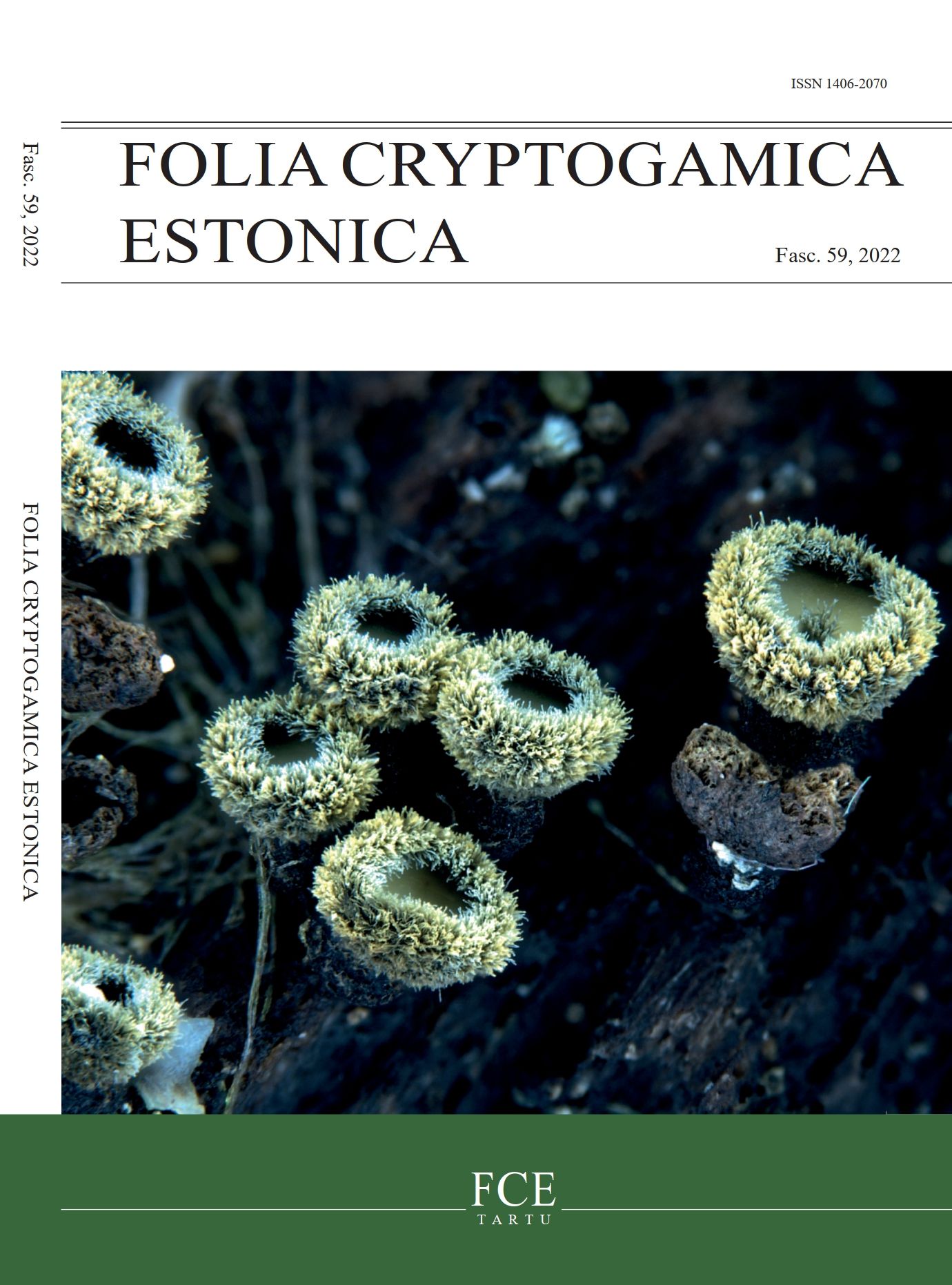Hornfels rocks as a habitat for saxicolous lichen biota. A case study from the Sudety Mountains (SW Poland)
DOI:
https://doi.org/10.12697/fce.2022.59.07Keywords:
saxicolous lichens, biodiversity, Hercynian mountains, Central Europe, metallophytesAbstract
The results of lichenological studies on hornfels outcrops in the Izerskie Mountains (Sudetes, SW Poland) are presented. This substrate is connected with the igneous intrusion into the country rocks and is characterized by a richer chemical and mineral composition than the surrounding rock bodies. In the six analyzed sites, a total of 48 saxicolous lichen species were found. Hornfels as a substrate for lichen vegetation is distinguished by the presence of lichens typical for rocks rich in metal compounds, in the study area represented by Rhizocarpon oederi, Lecidea silacea and Porpidia melinodes, and lichens that prefer mineral-enriched rocks, like Lecanora campestris, L. rupicola, Lecidea fuscoatra, Porpidia cinereoatra and Rimularia gibbosa. The three mentioned metallophilous species are some of the rarest components of the lichen biota in Poland, known from single localities. Other rare and locally endangered lichens recorded on hornfels include Lambiella furvella, Stereocaulon dactylophyllum and Umbilicaria pustulata.


